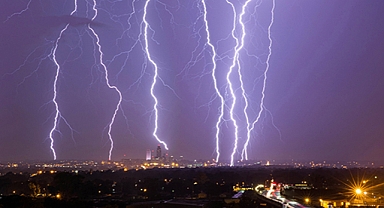For years, both state and federal lawmakers have attempted to end the biannual shifts, but the path forward remains tangled in legislation and debate. Some hope for permanent daylight saving time (DST), while others advocate for standard time throughout the year. Yet, no final decision has been reached, keeping the tradition of changing clocks intact for now.The Sunshine Protection Act and Federal Inaction
In 2022, momentum seemed to build toward ending the time change when the Sunshine Protection Act passed the Senate with unanimous approval. The bill aimed to make daylight saving time permanent, eliminating the need to "fall back" or "spring forward" every year. But the journey to lawmaking hit a snag: while the Senate forwarded the bill to the House of Representatives, it was never brought to a vote. As the 117th Congress came to a close, the bill expired, disappointing supporters eager for a change.The measure gained new life on March 1, 2023, when it was reintroduced during the 118th Congress. However, progress has been slow, with no vote scheduled, and the bill’s fate remains uncertain as the current session is set to conclude on January 3, 2025. Without swift action, any federal change will be delayed further.State Efforts to Eliminate Time Shifts
While federal inaction has slowed nationwide changes, individual states have been proactive. According to the National Conference of State Legislatures (NCSL), over 700 bills and resolutions have been introduced by various state legislatures to either establish year-round DST or eliminate the time shifts altogether, contingent upon federal approval. In 2024, at least 30 states are considering legislation related to DST.However, states can only fully enact year-round daylight time if the federal government grants permission. This patchwork of state efforts underscores growing frustration with the outdated practice of changing clocks twice a year.Why Arizona and Hawaii Don't Use DST
While most states continue to switch between standard and daylight time, Hawaii and Arizona have opted out of DST entirely. Under the Uniform Time Act of 1966, states were allowed to stay on standard time permanently if they chose, though few did. Arizona and Hawaii remain exceptions, with the Navajo Nation in northeastern Arizona being the only area within the state that observes DST.The Ongoing Debate: Standard Time vs. Daylight Time
Public opinion on eliminating clock changes is divided. A 2022 CBS News poll found that 46% of Americans favor year-round daylight saving time, while 33% support sticking to standard time all year. Meanwhile, 21% prefer to keep the current system with seasonal changes.There are pros and cons to each option. Permanent daylight saving time would extend daylight hours in the evening, potentially boosting tourism and outdoor activities, such as golf. But during the winter months, sunrise would occur later—after 8 a.m. in many places, meaning darker mornings. On the other hand, year-round standard time would offer earlier sunrises, which could benefit early risers but would also lead to sunrise times as early as 4:30 a.m. in some areas during peak summer months. Deciding which system to adopt remains a difficult question, with no consensus in sight.What Lies Ahead?
For now, Americans will continue to set their clocks back on November 3, 2024, marking the return to standard time. Unless federal lawmakers act soon, this biannual tradition will persist for the foreseeable future. While individual states push for change, a nationwide solution remains elusive, leaving many to wonder when—if ever—the time shifts will come to an end.
In 2022, momentum seemed to build toward ending the time change when the Sunshine Protection Act passed the Senate with unanimous approval. The bill aimed to make daylight saving time permanent, eliminating the need to "fall back" or "spring forward" every year. But the journey to lawmaking hit a snag: while the Senate forwarded the bill to the House of Representatives, it was never brought to a vote. As the 117th Congress came to a close, the bill expired, disappointing supporters eager for a change.The measure gained new life on March 1, 2023, when it was reintroduced during the 118th Congress. However, progress has been slow, with no vote scheduled, and the bill’s fate remains uncertain as the current session is set to conclude on January 3, 2025. Without swift action, any federal change will be delayed further.State Efforts to Eliminate Time Shifts
While federal inaction has slowed nationwide changes, individual states have been proactive. According to the National Conference of State Legislatures (NCSL), over 700 bills and resolutions have been introduced by various state legislatures to either establish year-round DST or eliminate the time shifts altogether, contingent upon federal approval. In 2024, at least 30 states are considering legislation related to DST.However, states can only fully enact year-round daylight time if the federal government grants permission. This patchwork of state efforts underscores growing frustration with the outdated practice of changing clocks twice a year.Why Arizona and Hawaii Don't Use DST
While most states continue to switch between standard and daylight time, Hawaii and Arizona have opted out of DST entirely. Under the Uniform Time Act of 1966, states were allowed to stay on standard time permanently if they chose, though few did. Arizona and Hawaii remain exceptions, with the Navajo Nation in northeastern Arizona being the only area within the state that observes DST.The Ongoing Debate: Standard Time vs. Daylight Time
Public opinion on eliminating clock changes is divided. A 2022 CBS News poll found that 46% of Americans favor year-round daylight saving time, while 33% support sticking to standard time all year. Meanwhile, 21% prefer to keep the current system with seasonal changes.There are pros and cons to each option. Permanent daylight saving time would extend daylight hours in the evening, potentially boosting tourism and outdoor activities, such as golf. But during the winter months, sunrise would occur later—after 8 a.m. in many places, meaning darker mornings. On the other hand, year-round standard time would offer earlier sunrises, which could benefit early risers but would also lead to sunrise times as early as 4:30 a.m. in some areas during peak summer months. Deciding which system to adopt remains a difficult question, with no consensus in sight.What Lies Ahead?
For now, Americans will continue to set their clocks back on November 3, 2024, marking the return to standard time. Unless federal lawmakers act soon, this biannual tradition will persist for the foreseeable future. While individual states push for change, a nationwide solution remains elusive, leaving many to wonder when—if ever—the time shifts will come to an end.








